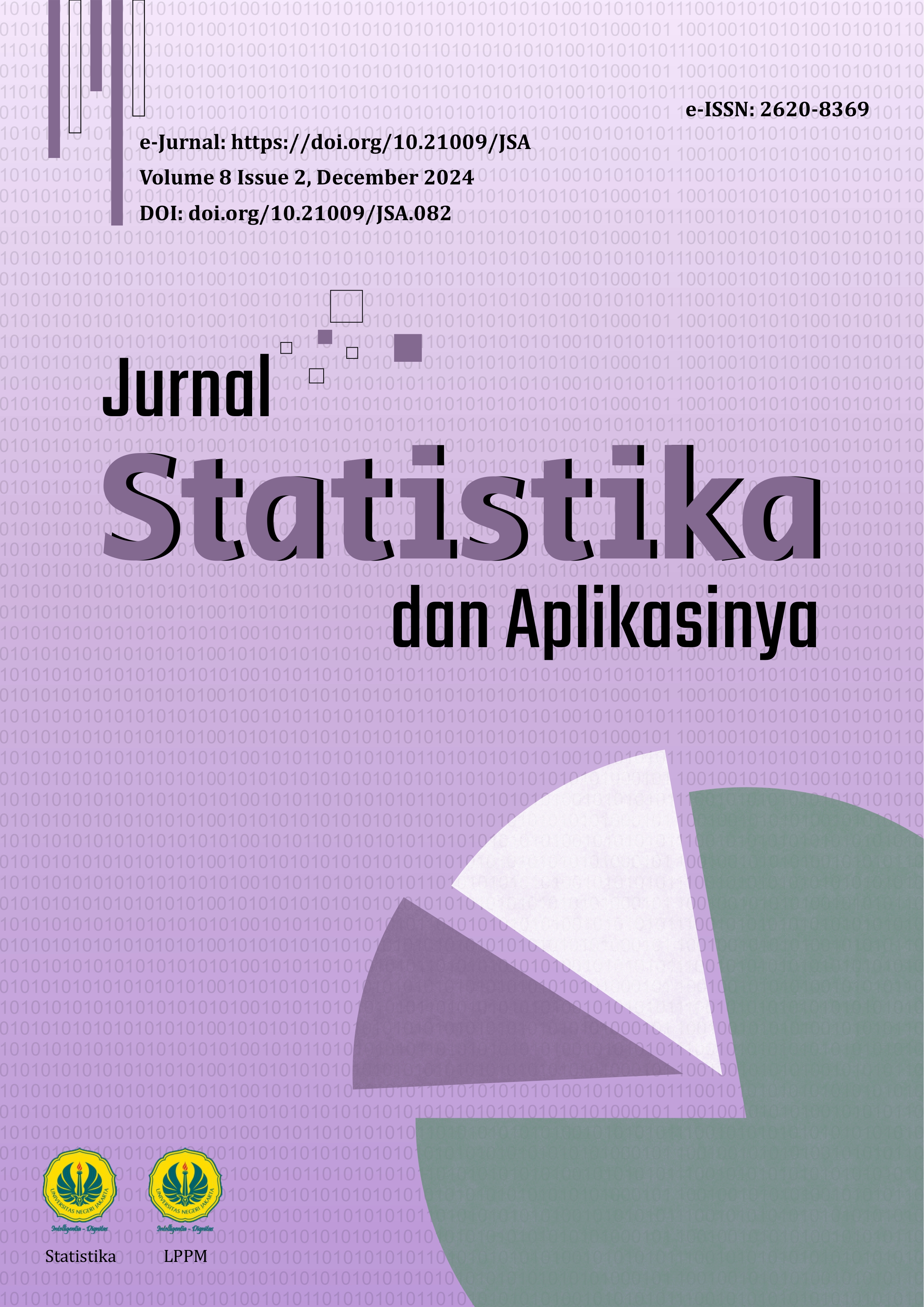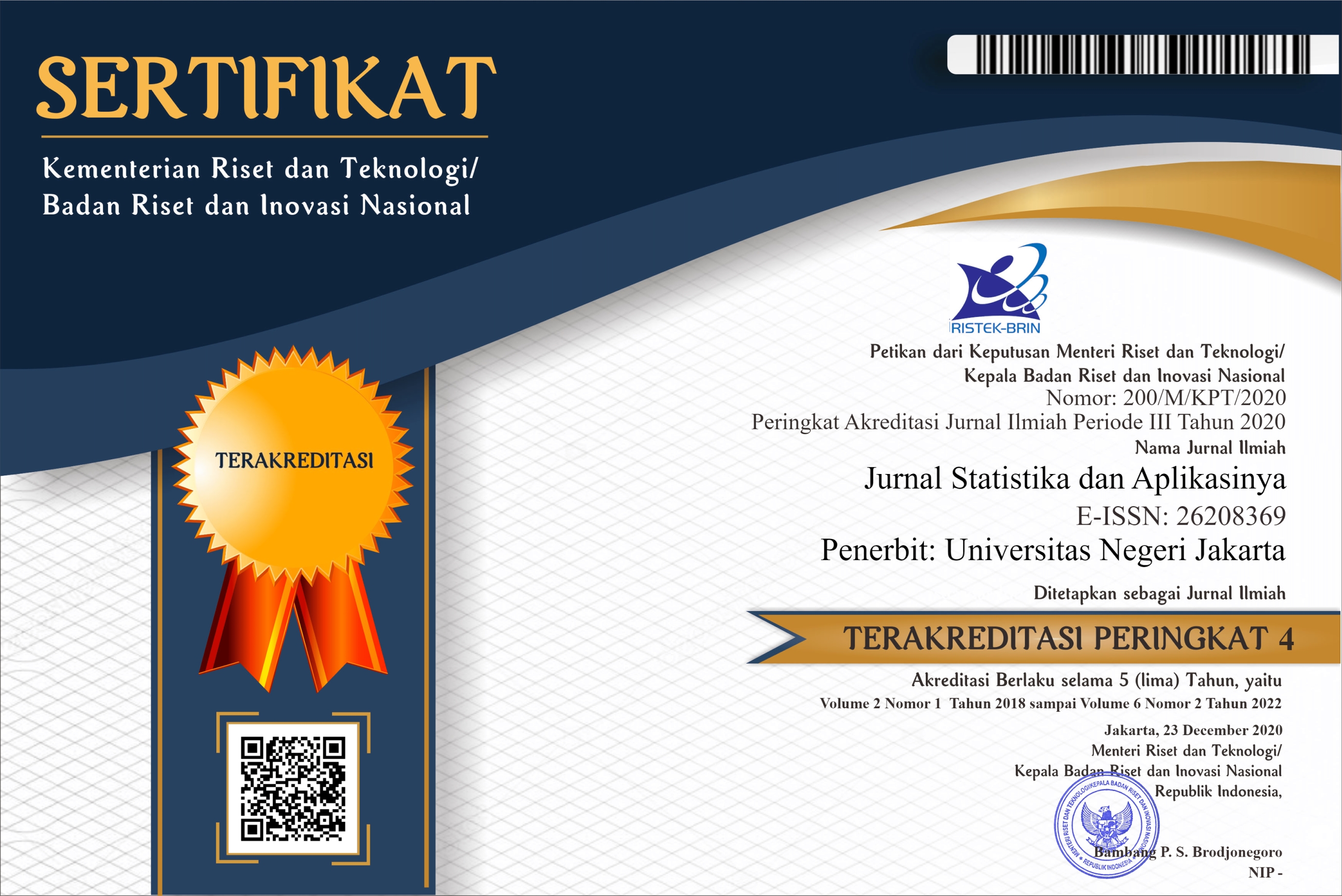COMPARISON OF MACHINE LEARNING CLASSIFICATION ALGORITHMS IN GROUPING INCOME DISTRIBUTION INEQUALITIES IN JAVA AND BALI
DOI:
https://doi.org/10.21009/JSA.08208Keywords:
inequality income, Machine Learning, resampling data, Data Mining, Classification, BLT, Decision Tree, AdaboostAbstract
Inequality is a growing issue in several countries, both developed and developing countries. The level of state income reflected in Gross Domestic Product (GDP) cannot yet describe whether income allocation is equitable or not. High GDP is the goal of a country, but welfare is much more important. Community welfare in a country can be interpreted as how much state income is enjoyed by the community. One benchmark for whether a country's income is equally enjoyed by its people or not is through the Gini index.
As industry 4.0 progresses, economic growth continues to increase. The largest share of Indonesia's GDP is on the islands of Java and Bali. Behind the rapid economic growth on the two islands, there is also inequality in income distribution. This research aims to classify districts and cities on the islands of Java and Bali based on factors that influence inequality using a data mining classification algorithm.
This research uses four algorithms, namely Decision Tree, Logistic Classification, Random Forest, and Support Vector Machine (SVM). These four methods will be compared (compared) based on model evaluation, so that they are able to predict testing data for the next period in order to produce the correct regional classification. This research also accommodates handling of imbalanced data, data imputation, and forecasting using Generalized Regression Neural Network (GRNN).






